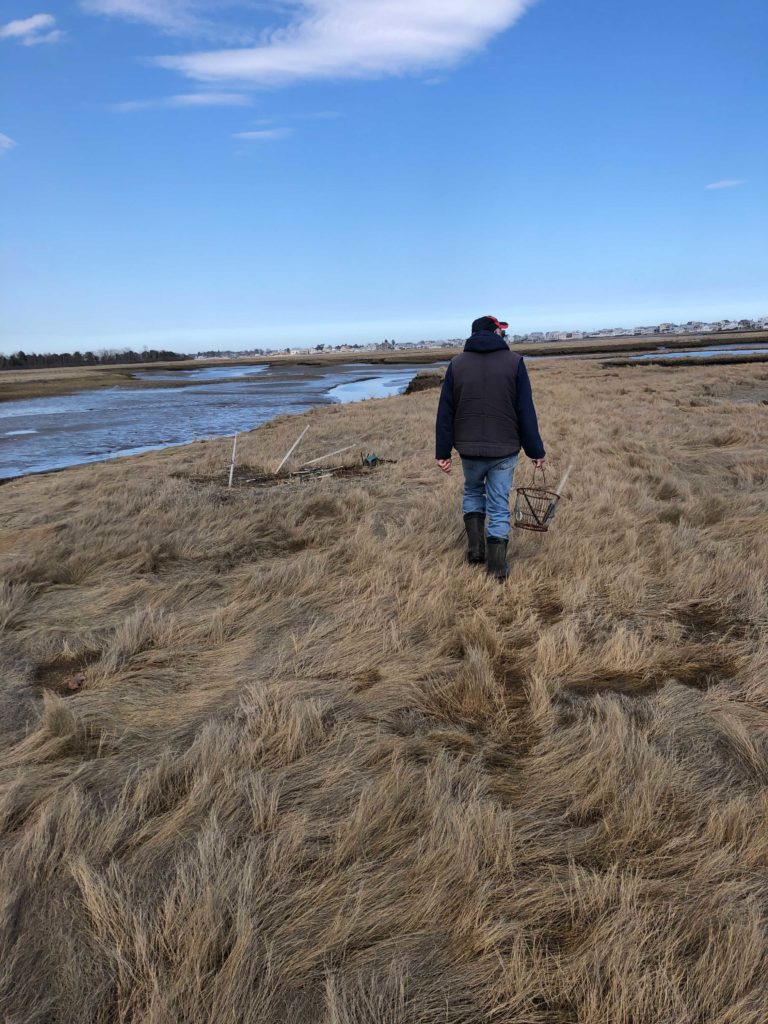How to Go Clamming
Head out to Maine’s mud flats and dig for your supper.

Along with the lauded lobster, one reason tourists flock to Vacationland every year is to consume basket upon basket of fried clams (along with steamed and chowdered clams). But did you know that anyone can dig for buried bivalves here? One of the state legislature’s first acts, in 1821, was to create laws to manage the state’s natural shellfish resources. “Whether it’s commercial or recreational, shellfish harvesting is in our blood,” says Denis-Marc Nault, a shellfish biologist and the supervisor of Maine’s shellfish management program.
According to Nault, there are only two states in the country (the other being Massachusetts) that do this kind of local, hands-on supervision. Coastal municipalities hire a certified shellfish warden to enforce licensing and harvest limits, and all residents have to do is go to their town clerk and inquire about getting a recreational license. Nonresidents can also apply—in Searsport, for example, you can buy a three-day recreational license for a mere $15—but every town has different limits based on their resources, so be sure to check before your trip.

Everett Leach, Wells’ Shellfish Warden, leads the writer out to the second largest salt marsh complex in Maine. 
It’s a windy April day, but much warmer than the rest of the clamming season in Wells, which runs from November to late March or early April. Check with your nearest Maine shellfishing township to find out when yours is open for clamming, as the dates change depending on the area.
Next, go to the Maine Department of Marine Resources’ live map to see where the Maine shellfish growing areas are and to check for water quality and red tide–type closures). “You’re eating the gut of an animal,” says Nault. “It’s a raw product, so you have to be careful. The standards are very tight.”
Finally, get out on the flats. The best time to go is on a falling tide, at low tide, or at the early stages of the incoming tide; in other words, when there’s more land than water. As for equipment, all you really need is some form of basket or bucket and a clam fork—a four or five-tine, bent fork with a stubby handle. Scan the mud or sand for holes, which will be spattered along the flat. “It’s kind of an oblong hole, not a round hole,” says Nault. “And there’s really two holes: from the incurrent and excurrent syphon in the clam’s neck.” Dig in front of the holes, carefully peeling through the layers of mud to get to the clams out without breaking their shells. Soft-shell clams, or steamers, which are the most common and what most people think of when they think Maine clams, will be down six to eight inches, sometimes a little deeper in the winter. A quahog isn’t going to make a distinctive hole but will have a black spot on the sand above; oysters and mussels are sitting right on the surface; razor clams have a sizeable, roundish to oval hole, and they’ll be down much deeper so are trickier to dig out.

Leach getting to work in the softshell clam flats. 
Teaching the writer how to dig: Locate the clam holes in the sand, stick the rake tines into the mud, and gently pull the land over onto itself to find the clams buried beneath. 
A nice juicy clam, perfectly sized. How do you know for sure it’s the right size? Bring a clam gauge. If it passes through the opening on the clam gauge, toss it back into the water. If it’s too big for the gauge, into your basket it goes.
You can recreationally harvest one peck, or eight quarts, of clams every day. And just like with fishing and lobstering, there are legal size limits to abide by: The minimum size for soft-shell clams is a shell two inches long. Quahogs, or hard-shell clams, must be one inch thick. If you’re lucky, you’ll hit what’s called “a run” and find yourself filling up your basket or bucket with more than enough for dinner, when you can boast about gleaning one of the state’s true wild foods.


